AACT microbiology assay #1 I realise my agenda is pretty busy for me to do proper assay of my AACT and record and update the blog while learning how to do the assay properly. So just to keep this going I will be making short updates until I'm getting comfortable with the process.
Initial assay
Today at around 6.15am I started a new batch of compost tea. For food, I was using kelp and alfalfa meal in the hope of getting a fungal rich tea. I took two samples, one of the rainwater itself and another one after adding the vermicompost and waiting for about a minute. Being a bit late for work, I did a very quick assay of both. The water seemed to contain no trace of microorganisms which seems odd to me. I will check another sample from the rainwater collection barrel later on. The young compost tea showed a few bacterias, about 15 individuals in a view field at 800x. I spotted no fungal hypha, no nematodes, maybe a ciliate and a flagellate Protozoa but the dilution was high so things will change as times goes on.
My plan is to make a fungal and Protozoa rich tea as from my soil assay I already have a lot of bacteria.
However I won't get any fungi in my tea if my vermicompost does not contain them. So I will have to do some tests with vermicompost extract and see what I have to do to introduce them. An idea is to go collect few pinches of top soil from a local wood/forest to inoculate the worm bins or the AACT.
14 hours brew assay
After work and diner, I went taking another sample of the Actively Aerated Compost Tea at 14 hours brewing time and did an assay of its microbiology.
View field #1:
I didn't see much in this field, and at 800x I could only see 5 bacteria and 1 flagellate
View field #2:
At 80x, I could count 4 flagellates and something big but I could not recognise it.
At 200x, the big stuff was still there, I counted 1 flagellate and 4 bacteria
At 800x, I got 2 flagellates and 50 bacteria (dot shaped)
View field #3
At 80x, I counted 1 rotifer and 2 flagellates
At 200X, I counted 2 flagellates, a rod shaped bacteria and an unidentified organism
At 800X, I could count 60 bacteria, 1 rotifer and 1 flagellates
View field #4
At 4x, there was a nematode wiggling around
At 10x, I saw 1 flagellates, one rod shaped bacteria
At 800x, what I think is a naked Amoeba and about 200 bacteria
Browsing randomly looking for fungal hyphae
I found half a dozen of fungal hyphae which was exactly what I was after! So yay! My first success at identifiying one thanks to Nina and Heather from the WFA.
Here are some photos taken of the fungal hyphae and unidentified microorganisms.
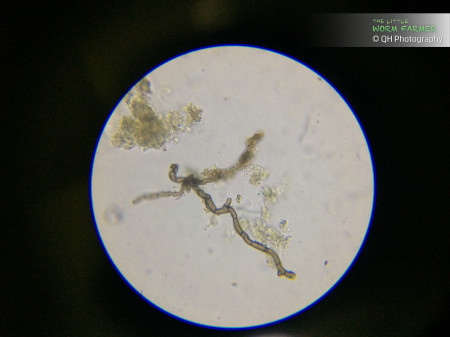
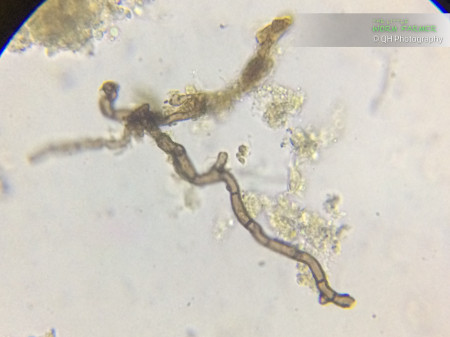
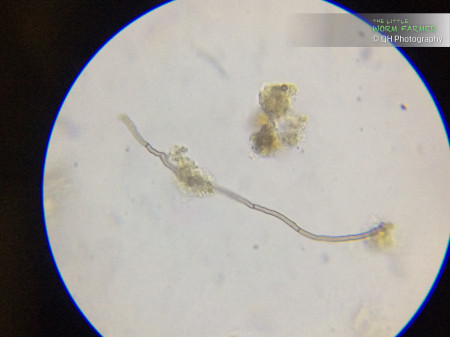
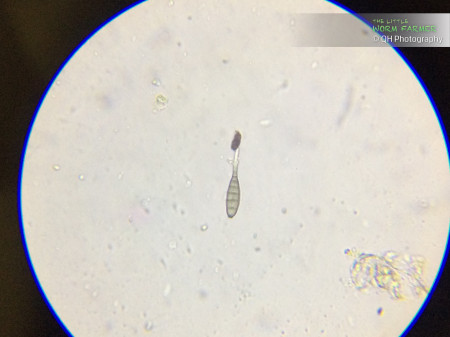
Update: the photo below is of a Alternaria Solani, aka Early Blight... oops... Spotted only one so that's OK. I need to keep an eye on this (thanks Heather).
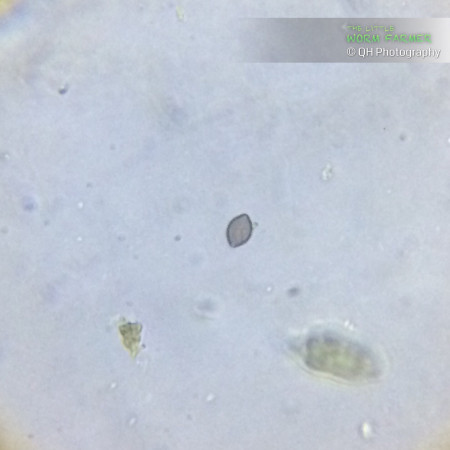
Update: this might be a mold/fungi spore (thanks Heather)
Posted
in
A day in a worm farm, Microscopy in worm farming on Dec 06, 2016
by Quoc-Huy Nguyen Dinh
